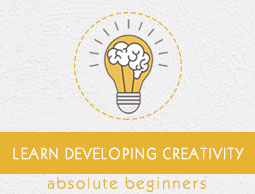
- Developing Creativity - Home
- Developing Creativity - Introduction
- Developing Creativity - Techniques
- Characteristics of Creative Thinkers
- Organizations Treasure Creativity
- Developing Creativity - Case Study
- Brainstorming
- Storyboarding
- Employee Creative Thinking
- Computer-Aided Creativity
- Software Visualization Tools
- Spatial Representation Tools
Developing Creativity - Introduction
There are numerous ways of describing Creativity, out of which the one that most scholars agree is that it is the supply of imaginative ideas which provide innovative solutions to problems through a new approach to the problem. It is also defined as a novel approach that can integrate with an existing knowledge in an organic manner.
In addition to all these features, creativity should also result in ideas that are valuable or have any positive evaluation. If a creative idea is not practical, then it ceases to be of any value. Such creative ideas are not considered creative, but impractical.
Creativity involves the dual processes of generation of new ideas, as well as generating different ways of seeing the same events, both are important to achieve creative solutions to the problems.

Creativity involves the generation of new ideas or the recombination of known elements into something new, providing valuable solutions to a problem. It also involves motivation and emotion. In this tutorial, we will discuss all the areas that creativity influences and how to nurture it in ones career path.
Defining Creativity
Creativity is a unique quality of human intelligence in general. It can be found in everyday situations that people face in their lives, such as the association of ideas, recalling, having a perception, analogical thinking, and engaging in self-criticism.
There are three kinds of Creativities which tell us different manners of supplying novel ideas −
Combining Creativity − This is a new combination of tried and tested ideas.
Exploring Creativity − New ideas are generated from exploring concepts.
Transforming Creativity − Transforming set structures to enhance new ones.
Creative thinking is credited with playing an important role in innovation. In fact, people even go to the extent of saying that both Creativity and Innovation are complementary activities. Pursuing a creative thought results in innovation. Pursuing different ways of solving problems results in getting creative answers.
For creativity to convert into innovation, a proper organizational culture is necessary. A right organizational culture provides opportunities and support for the creativity processes for the development of personal and group creativity skills.
Significance of Creativity
One of the foremost objectives of engaging people in a creative thinking process is as follows −
To make people think without boundaries.
To initiate curiosity in something.
To steer clear of conventional yet traditional ideas as well as reoccurring procedures and
To only rely on ones imagination to consider multiple solutions and alternatives to a problem.
The outcomes of a creative thinking process are specifically important in the world of business. The managerial decisions and corporate behavior of any organization are dependent on its skills of adaptability in a fast changing and increasingly ambiguous market scenario.
This is the reason behind the acute needs for creative solutions and creative action-based strategies. The more the managers increase their understanding of problematic situations and learn finding multiple solutions to the problems; the faster they will be able to get themselves and their teams ready for any possible alternatives in various possible situations in the future.